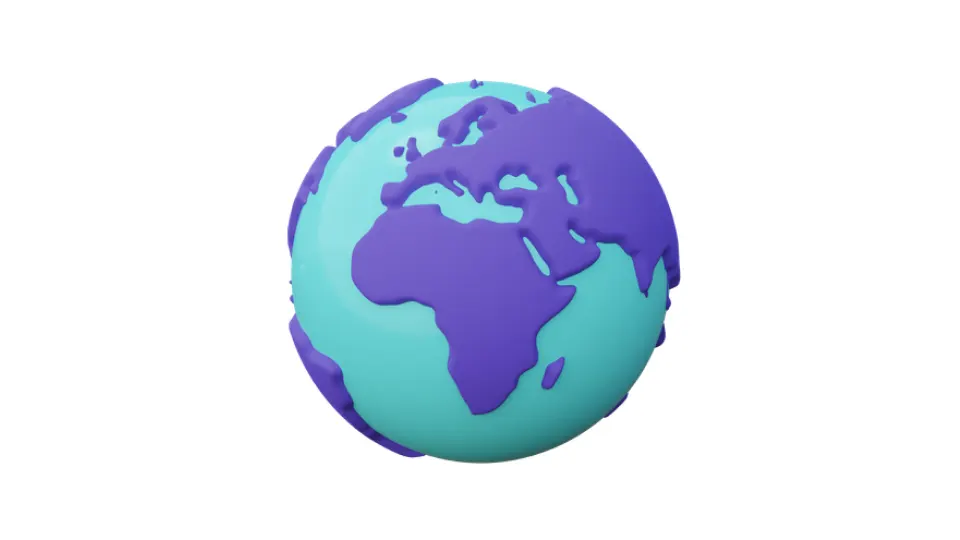User acquisition costs are climbing, competition is cutthroat, and relying on one channel is basically gambling with your runway. So where’s the upside? Look east, south, and everywhere in between: emerging markets. These regions are adding millions of new smartphone users every year, and they’re hungry for apps that get them.
The trick isn’t just showing up. It’s showing up in the right language, the right context, and with the right payment methods. In short: localization done right.
Why Emerging Markets Matter
Emerging markets aren’t “nice to have” anymore — they’re where the action is. Smartphone penetration is exploding, mobile-first users are skipping desktops entirely, and internet access is becoming cheaper by the month.
Consider this:
- Africa is leapfrogging into mobile payments, where apps like M-Pesa are everyday utilities.
- India adds ~25 million new internet users every year, most of them mobile-first.
- Brazil and Mexico are two of the fastest-growing app markets, with gaming and fintech leading the charge.
Global players are already adapting. Spotify didn’t just launch the same premium plan everywhere; they rolled out localized playlists, cheaper tiers, and mobile-only subscriptions tailored to India and Brazil. The result? Growth outside Europe and the U.S. that turned “emerging” into “essential.”

Language & UX: Meet Users Where They Are
You can’t just translate your copy and call it a day. Real localization means meeting people where they are — in their language, with their cultural context, and on devices they actually use.
- Tone matters: Formal vs. casual language varies across cultures. Japanese users often expect polite, formal phrasing, while Brazilian Portuguese thrives on warmth and friendliness.
- Reading patterns: Supporting right-to-left scripts like Arabic or Hebrew isn’t optional if you want those markets. Poor text alignment instantly screams “afterthought.”
- Device reality: In markets where entry-level Android phones dominate, your UI needs to run light and simple, not assume flagship specs.
Example: TikTok’s Indian boom (before the ban) wasn’t just about algorithmic magic. They supported dozens of regional languages and created a feed that surfaced local creators, not just global trends. That made users feel like the app was theirs.
Payment Methods: Remove Friction
Here’s the thing: if people can’t pay you the way they already pay for everything else, they won’t. Period.
In many emerging markets, credit card penetration is under 10%. Assuming Visa and Mastercard adoption is a rookie mistake. Instead:
- Digital wallets dominate: Think Paytm (India), Mercado Pago (LATAM), or MoMo (Vietnam).
- Carrier billing is still big: Users add app purchases to their mobile plan, no card required.
- Cash-based systems like vouchers or over-the-counter top-ups matter, especially where trust in online payments is low.
Netflix nailed this in India by offering a low-cost, mobile-only plan priced specifically for local wallets. Instead of asking users to stretch for a global price point, they fit into local spending habits.
Cultural Adaptation: Earn Trust & Loyalty
Culture isn’t a “nice extra.” It’s the lens through which users decide whether your app feels relevant — or foreign.
- Visuals: Stock photos of New York loft apartments won’t resonate in Nairobi or Jakarta. Use local imagery that reflects real life.
- Festivals & holidays: Tie promotions and features to local calendars. Ramadan, Diwali, or Carnival aren’t just cultural events — they’re prime engagement windows.
- Core features: Sometimes the biggest win is feature adaptation. Example: In India, McDonald’s app highlights vegetarian menus and runs promotions during Navratri and other festivals. That’s not marketing fluff — it’s how they show users they belong.
Apps that ignore culture feel like awkward imports. Apps that adapt to culture feel like trusted locals.
Key Localization Levers
| Lever | Why It Matters | Examples |
|---|---|---|
| Language & UX | Goes beyond translation — users expect tone, navigation, and usability that feel natural | TikTok supported dozens of Indian languages, driving massive adoption pre-ban |
| Payment Methods | Credit card use is low in many markets; local wallets, vouchers, and carrier billing open doors | Netflix launched a mobile-only plan in India, priced for local spending habits |
| Cultural Adaptation | Builds trust by reflecting local traditions, festivals, and values | McDonald’s app in India promotes vegetarian meals and runs Diwali/holiday offers |
| Pricing & Access | Affordability decides adoption; flexible tiers prevent exclusion | Spotify offers lower-priced mobile plans and localized playlists in Brazil & India |
Final Thoughts
Emerging markets are where the next billion users are waiting — but you can’t unlock them with a copy-paste global strategy.
Winning here means investing in four localization pillars:
- Language & UX that respect how people read, speak, and use devices.
- Payment methods that fit local habits, not Western defaults.
- Cultural adaptation that builds trust and loyalty.
- Pricing & access designed for real wallets, not spreadsheets.
Get this right, and you’re not just “expanding into new markets.” You’re embedding your app into people’s daily lives — and securing growth in regions that will define the future of the mobile economy.
Monetization Strategy FAQs
Q1: Why is app localization so important for emerging markets?
A: Users are more likely to engage and convert when content is in their native language and culturally relevant. Localization improves trust, lowers friction, and shows respect for local users — which is key in competitive, high-growth markets.
Q2: What are the biggest mistakes companies make when entering new markets?
A: Common mistakes include direct translation without cultural adaptation, ignoring local payment preferences, overestimating ARPU, and not optimizing for lower-end devices or slower networks. All of these can result in poor adoption despite demand.
Q3: How do I choose which emerging markets to target first?
A: Look at smartphone penetration, internet availability, cultural fit with your product, and competitor presence. Start with one or two regions, run small-scale campaigns, and iterate based on user feedback before expanding further



